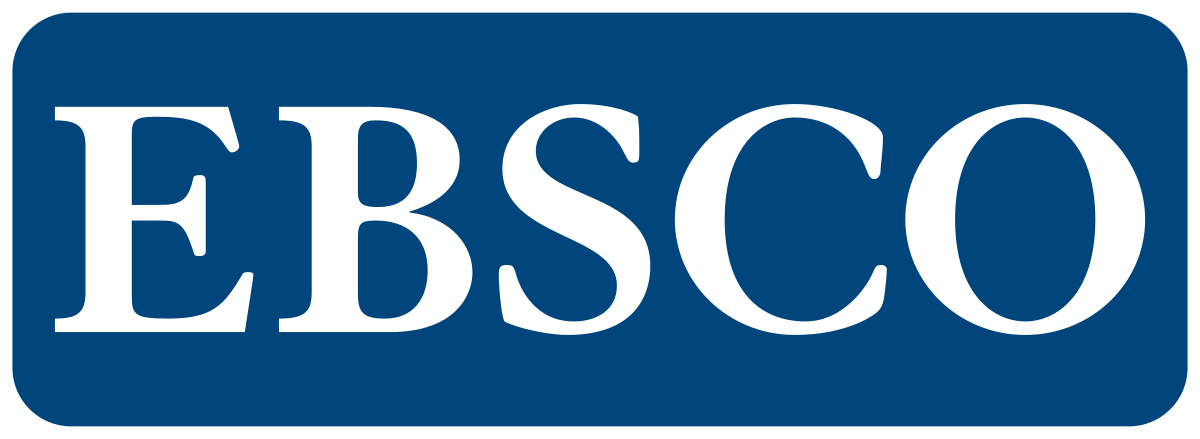The Effect of Bio-Fertilizer Concentration and NPK Fertilizer Dosage on the Growth and Yield of Melon (Cucumis melo L.) Merlin Variety
DOI:
https://doi.org/10.23960/jtep-l.v14i2.638-644 Abstract View: 214
Abstract View: 214
Abstract
Melon (Cucumis melo L.) is a fruit known for its sweet and refreshing taste. Traditionally, melon cultivation has relied on conventional farming methods. The use of biofertilizers offers an alternative to reduce dependency on synthetic fertilizers. This study aimed to enhance the production of healthy, high-yielding melon plants by substituting Mutiara NPK fertilizer with Bioto Grow Gold (BGG) biofertilizer. Conducted in Sukosongo Village, Kembangbau District, Lamongan Regency, East Java, the experiment employed a factorial Completely Randomized Design (CRD).Two factors were tested: BGG fertilizer at four concentrations (0 ml/L [P0], 1 ml/L [P1], 2 ml/L [P2], and 4 ml/L [P3]) and NPK fertilizer at four doses (0 g/plant [N0], 60 g/plant [N1], 70 g/plant [N2], and 80 g/plant [N3]). Results indicated that BGG fertilizer influenced both vegetative and generative growth variables, as did the Mutiara NPK fertilizer doses. The optimal combination was achieved with a BGG concentration of 3 ml/L and an NPK dose of 70 g/plant, which significantly increased the sucrose content in melons.
Keywords: Bioto Grow Gold fertilizer, Biofertilizer, Melon, NPK Mutiara fertilizer.
Downloads
References
Aritonang, S., & Surtinah, S. (2018). Stimulasi hasil melon (Cucumis melo L.) dengan menggunakan bioto grow gold (BGG). Jurnal Ilmiah Pertanian, 15(1), 35-41. https://doi.org/10.31849/jip.v15i1.1481
Bhardwaj, D., Ansari, M.W., Sahoo, R.K., & Tuteja, N. (2014). Biofertilizers function as key player in sustainable agriculture by improving soil fertility, plant tolerance and crop productivity. Microb Cell Fact., 13, 66. https://doi.org/10.1186/1475-2859-13-66
BMKG (Badan Meteorologi, Klimatologi, dan Geofisika). (2023). Curah Hujan Rata-Rata Pada Bulan Maret. Accessed on 5 December 2024 from https://www.bmkg.go.id/cuaca/prakiraancuaca.bmkg?AreaID=5008387&Prov=12&lang=ID
Budiman, D., Iskandar, Y., & Jasuni, A.Y. (2022). Millennials’ development strategy agri-socio-preneur in West Java (case study in Ciletuh-Palabuhan Ratu Geopark Area). Proceedings of the International Conference on Economics, Management and Accounting (ICEMAC 2021), 315–323. https://doi.org/10.2991/aebmr.k.220204.034
Chittora, D., Parveen, T., Yadav, J., Meena, B.R., Tripta, J., & Sharma, K. (2023). Harmful impact of synthetic fertilizers on growing agriculture and environment. Glob J Pharmaceu Sci., 11(1), 555804. https://doi.org/10.19080/GJPPS.2023.11.555804
Daryono, B.S., Maryanto, S.D., Nissa, S., & Aristya, G.R. (2016). Analisis kandungan vitamin pada melon (Cucumis melo L.) Kultivar Melodi Gama 1 dan melon komersial. Biogenesis: Jurnal Ilmiah Biologi, 4(1), 1-9. https://doi.org/10.24252/bio.v4i1.1113
Gomez, K.A., & Gomez, A.A. (1995). Prosedur Statistik untuk Penelitian Pertanian. (Translation by Syamsudin, E., & Baharsjah, J.S.). UI Press, Jakarta: 689 pp.
Ikhwan, A.K., Waqik, A., Anwar M., Fitrothul, F., Ramawati, D., & Pawana, G. (2015). Inokulasi Azospirillium sp dari lahan kering madura terhadap pertumbuhan tanaman jagung. Agrovigor Jurnal Agroekoteknologi.
Iskandar, Y., Ardhiyansyah, A., Heliani., & Jaman, U.B. (2023a). The effect of leadership, supervision, and work motivation of the principal on teacher professionalism at sma Yadika Cicalengka, Bandung regency. Proceedings of the International Conference on Education, Humanities, Social Science (ICEHoS 2022), 460–468. https://doi.org/10.2991/978-2-38476-088-6_50
Iskandar, Y., Pahrijal, R., & Kurniawan, K. (2023b). Sustainable HR practices in Indonesian MSMES from a social entrepreneurship perspective: training, recruitment, employee engagement, social impact of local communities. International Journal of Business, Law, and Education, 4(2), 904–925. https://doi.org/10.56442/ijble.v4i2.262
Lester, G. (1997). Melon (Cucumis melo L.) fruit nutritional quality and health functionality. HortTechnology, 7(3), 222-227. http://dx.doi.org/10.21273/HORTTECH.7.3.222
Mallek-Ayadi, S., Bahloul, N., Baklouti, S., & Kechaou, N. (2022). Bioactive compounds from Cucumis melo L. fruits as potential nutraceutical food ingredients and juice processing using membrane technology. Food Sci Nutr., 10(9): 2922-2934. https://doi.org/10.1002/fsn3.2888
Manchali, S., Murthy, K.N.C., Vishnuvardana, V., & Patil, B.S. (2021). Nutritional composition and health benefits of various botanical types of melon (Cucumis melo L.). Plants (Basel), 10(9), 1755. https://doi.org/10.3390/plants10091755
Nugraha, G.B.A., Wandri, R., & Asmono, D. (2019). Solubilisasi fosfat anorganik oleh Burkholderia sp. pada rizosfer kelapa sawit (Elaeis guineensis Jacq.) di tanah mineral masam. Journal of Suboptimal Lands, 8(1), 86-93. https://doi.org/10.33230/jlso.8.1.2019.404
Nursayuti, N. (2019). Respon pertumbuhan dan produksi tanaman melon (Cucumis melo L.) akibat aplikasi pupuk cair dan pupuk kandang. Agrosamudra, 6(1), 53-60. https://doi.org/10.33059/jupas.v6i1.1507
Palmasari, B., Amir, N., Paridawati, I., & Astuti, D.T. (2022). Upaya meningkatkan pertumbuhan dan hasil tanaman melon (Cucumis melo L.) dengan pemupukan organik cair dan anorganik. Jurnal Agroekoteknologi Tropika Lembab, 5(1), 50-55.
Sembiring, M., Sabrina, T., & Mukhlis, M. (2020). Effect of soil conditioner enriched with biofertilizers to improve soil fertility and maize (Zea mays L.) growth on andisols Sinabung area. Acta agriculturae Slovenica, 116(2), 253-260. http://dx.doi.org/10.14720/aas.2020.116.2.1322
Suharno, S. Mawardi, I., Setiabudi, S., Lunga, N., & Tjitrosemito, S. (2007). Nitrogen use efficiency in different vegetation type at Cikaniki Research Station, Halimun-Salak Mountain National Park, West Java. Biodiversitas. 8(4), 287-294. https://doi.org/10.13057/biodiv/d080409
Susilawati, M. (2015). Perancangan Percobaan. Fakultas MIPA, Universitas Udayana, Denpasar.
Tripathi, S., Srivastava, P., Devi, R.S., & Bhadouria, R. (2020). Chapter 2 - Influence of synthetic fertilizers and pesticides on soil health and soil microbiology. In Agrochemicals Detection, Treatment and Remediation – Pesticides and Chemical Fertilizers (Editor: Prasad, M.N.V.). Butterworth-Heinemann: 25-54. https://doi.org/10.1016/B978-0-08-103017-2.00002-7.
Downloads
Published
How to Cite
Issue
Section
License
Authors who publish with this journal agree to the following terms:
Authors retain copyright and grant the journal right of first publication with the work simultaneously licensed under a Creative Commons Attribution-ShareAlike 4.0 International Lice that allows others to share the work with an acknowledgement of the work's authorship and initial publication in this journal.
Authors are able to enter into separate, additional contractual arrangements for the non-exclusive distribution of the journal's published version of the work (e.g., post it to an institutional repository or publish it in a book), with an acknowledgement of its initial publication in this journal.
Authors are permitted and encouraged to post their work online (e.g., in institutional repositories or on their website) prior to and during the submission process, as it can lead to productive exchanges, as well as earlier and greater citation of published work (See The Effect of Open Access).
Jurnal Teknik Pertanian Lampung

JTEPL is licensed under a Creative Commons Attribution-ShareAlike 4.0 International License.













